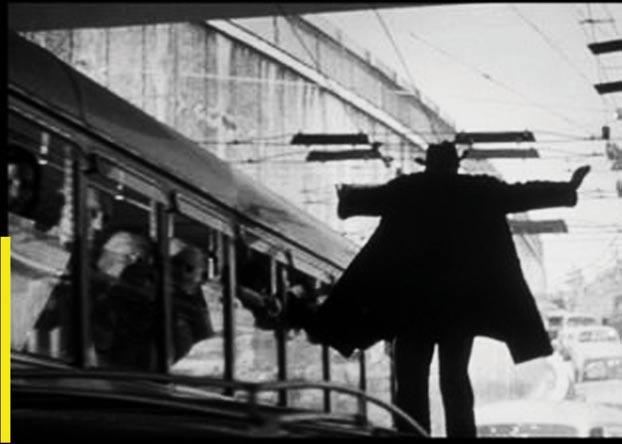
5 minute read
10 FILMS YOU MUST SEE BEFORE YOU
By Patrick I. Buntichai
Le Samouraï
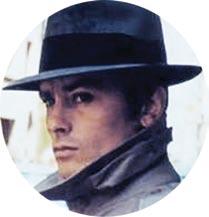
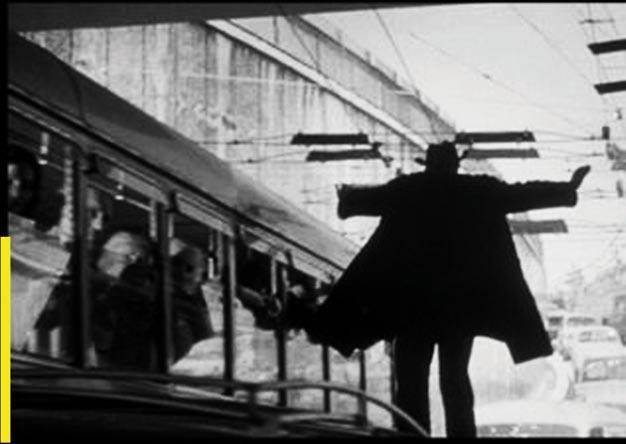
(1967) dir.
Jean Pierre Melville
Possibly French actor Alain Delon’s greatest work, Le Samouraï is a crime thriller classic that follows hit man Jef Costello as he runs around town, escaping the police and employers who eventually seek to kill him. Melville paints a picture of a man alienated from the rest of the world in a slew of fascinating sequences. However, the work would not be complete without Alain Delon’s portrayal of the cold-hearted assassin, who’s façade begins to crack as the world around him crumbles. There is nothing more captivating than looking straight into Costello’s icy-blue eyes and seeing absolutely nothing at all.
Flesh/Trash/Heat
(1968/1970/1972) dir. Paul Morrissey

Flesh/Trash/Heat is the landmark underground film trilogy featuring breakout Warhol superstar, Joe Dallesandro that represents the life of sex, drugs, and rock n’ roll. Flesh follows the day in the life of a street hustler who must go out and earn $200 to pay for his wife’s lesbian lover’s abortion. In a collection of scattered encounters with former male lovers, transvestites, and sketchy older men, the low- budget film is a humorous yet sad patchwork of a man caught in an endless cycle where he is nothing but a piece of Flesh. Trash follows Joe as a junkie who lives in poverty with his wife Holly (played by transvestite Holly Woodlawn) who roams around New York trying to hustle anything to get a quick fix. The standout in this film is Woodlawn, whose performance launched a fervent campaign to get her nominated for an Academy Award for Best Supporting Actress. Shot in LA rather than NYC, Heat is the most “Hollywood” of the three films. This time around, Joe is an unemployed former child-star who shacks up with a washed up Hollywood starlet played by Academy Award-nominated actress Sylvia Miles. It is nothing but pure camp and doesn’t quite match the two previous films in terms of prolificness. However, it still has its entertaining and humorous moments. “Help! I need a BAAAAND-AID! The chlorine is seeping into my cigarette burns!” (These films contain lots of nudity and sex and may not appeal to the average viewer.)
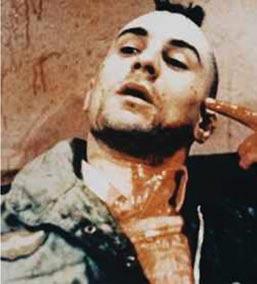
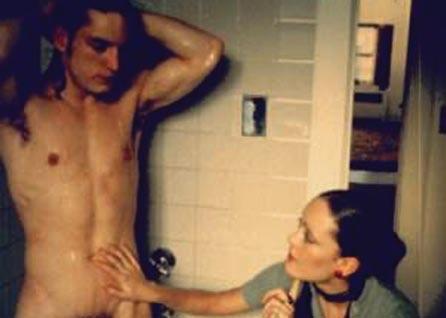
Mean Streets
(1973)
Back when I was a little kid watching recent years, Turner Classic Movies. until I grew up. Nowadays, we a film connoisseur and possibly conventions: the sixties and seventies. SO, HERE ARE TEN FILMS THAT SEE BEFORE THEY DIE.
In Scorcese’s first critically acclaimed film, a young Italian (Harvey Keitel) wanders the “streets” struggling between desiring power in the local mafia, looking out for his selfdestructive friend Johnny, and loving Johnny’s cousin Theresa. While this is Scorcese’s breakout film as a director, it is Robert De Niro’s breakout film as actor. De Niro is captivating as the borderline psychotic Johnny and is enough reason to check out this 1973 classic.
8 ½
This film is one word: epic. It’s famous 3 and a half minute opening sequence is about an Italian film director played by Marcello Mastroianni who is suffering director’s block. Rather than facing the demands of his wife, mistress, and producer, into his dreams and memories that are interwoven with reality. The film is biographical as Felini was experiencing director’s block at the time. The black exhilarating, confusing journey into man’s consciousness.
watching Nickelodeon and soap operas, I used to criticize my father for always having our living-room TV tuned to American Movie Classics and, in Movies. Though I would watch with him and occasionally become engrossed in these films, I never truly understood his preference for old movies we have filmmakers and film students constantly trying to figure out new innovative, sometimes pretentious techniques to experimental film. But as possibly a filmmaker someday, the films I seem to appreciate the most are those made during a time when people were getting fed up with Hollywood seventies.
THAT ARE BY NO
MEANS THE GREATEST FILMS OF ALL TIME. THEY ARE MERELY SOME OF THE MANY FILMS THAT ANY REAL AFICIONADO SHOULD
Taxi Driver
(1976) dir. Martin Scorcese
This is one of those films that everyone has heard about and probably has recited its famous “you talking to me?” line. Yet I doubt many people have actually bothered to see what all the hyoe is about. In his second partnership with Scorcese, Robert De Niro plays Vietnam-War veteran Travis Bickle who makes a living cruising the streets as a taxi driver. He is a troubled, lonely man who sets his sights on a political campaign organizer (Cybil Shepherd). After being rejected, he becomes increasingly disturbed and makes it his mission to rid New York of its moral decay. (Travis tries to help a 14 year-old Jodie Foster escape a life of prostitution.) The film culminates in the epic shoot-out that firmly cements Scorcese as one of the greatest visionaries of all time.
Seconds
(1966) dir. John Frankenheimer

Arthur Hamilton (John Randolf) is a middle-aged man detached from his job and his dwindling marriage. He is approached by a secret organization that promises to give him a second chance at youth. After extensive plastic surgery and psychoanalysis, he becomes Tony Wilson (Rock Hudson) and begins to enjoy his newfound youth. However, he soon realizes that being “reborn” has its deadly consequences. Frankenheimer’s direction, combined with black and white cinematography from James Wong Howe, successfully depicts the paranoia and nightmare of Seconds
Midnight Cowboy
(1969) dir. John Schlesinger
The only X-rated (at the time) to win the Academy Award for Best Picture, Midnight Cowboy is a film starring Jon Voight as a young rodeo star who moves to NYC for bigger and better things. He eventually meets a crippled con artist (Dustin Hoffman) who takes his money and leads him into a life of male prostitution. The heart of the film, however, comes from the ensuing friendship between the two contrasting characters.
Blow-Up
(1966) dir. Michelangelo Antonioni
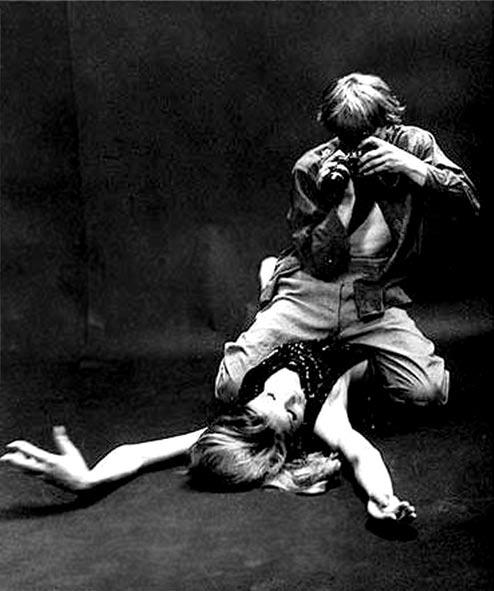
Swinging London photographer David Bailey (David Hemmings) snaps a picture of a couple kissing in a park. Little does he know that he is actually a witness to a murder. For his first English film, Italian filmmaker Michelangelo Antonioni carries-on his trademark pans and dialogue-less long takes and combines them with the London mod scene of the mid-sixties.
Rosemary’s Baby
(1968) dir. Roman Polanski
Pregnancy may never be more frightening than in 1968’s Rosemary’sBaby. Rosemary (Mia Farrow) has a dream that she is raped by Satan. Weeks later, she finds out that she is pregnant. Roman Polanski triumphs with his first US film that is decorated with an inspiring performance from Mia Farrow. The film’s ironic juxtaposition makes the film chilling, yet darkly humorous.
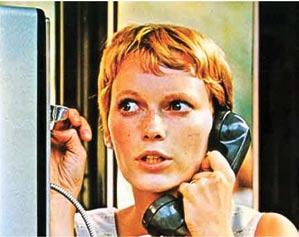
Women In Revolt

sequence alone is…epic. It suffering from a bout of producer, he retreats unintentionally autoand white film is an
(1971) dir Paul Morrissey
Probably my fav out of the Warhol collection not by filmic techniques but by the purely trashy performances of the three main stars: Candy Darling, Jackie Curtis, and Holly Woodlawn. The three transvestites play friends who are sick of being oppressed by men and vow to become lesbians and join a women’s liberation group, aptly titled P.I.G.S. (Politically Involved Girls). Unfortunately, by the end of the film, the three “girls” end up being even more oppressed than they were before. As a satire of the women’s liberation movement, it isn’t a film for staunch feminists and must not be taken seriously. Instead, you must enjoy it for what it is: a campy film starring three cracked out transvestites.
BY ANNEKA REID








